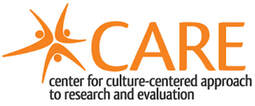Volume 2, Issue 1
2004
Welcome to the second issue of PRism. We aim to provide PR and communication researchers and practitioners with high standard, refereed online reference materials, and furnish new academic writers with a refereed outlet to encourage development of top quality scholarly work.
This issue we bring you articles from a range of established international researchers, plus further new faces to show that our policy of encouraging new work is succeeding. There is a particular emphasis this issue on pedagogy, with Alexander's article raising a range of important questions about future directions in PR teaching, and articles by Knabe, Demetrious, and Fall profiling specific examples of PR education changing and developing, particularly in response to new technologies. However,you'll also find important reading on ethics by Harrison, new research on intercultural communication by Pfeifer and Love that is useful for all communicators working in multi-cultural contexts, and a clear and practical application of appreciative inquiry methods to the PR function by Galloway.
Finally, Thangaraj offers some more light-hearted inquiry into typology and branding, and we round the issue off with no fewer than ten book reviews giving candid opinions of some of the latest PR and communication publications.
We hope you enjoy the issue.
Elspeth Tilley
Editor
Welcome to the second issue of PRism. We aim to provide PR and communication researchers and practitioners with high standard, refereed online reference materials, and furnish new academic writers with a refereed outlet to encourage development of top quality scholarly work.
This issue we bring you articles from a range of established international researchers, plus further new faces to show that our policy of encouraging new work is succeeding. There is a particular emphasis this issue on pedagogy, with Alexander's article raising a range of important questions about future directions in PR teaching, and articles by Knabe, Demetrious, and Fall profiling specific examples of PR education changing and developing, particularly in response to new technologies. However,you'll also find important reading on ethics by Harrison, new research on intercultural communication by Pfeifer and Love that is useful for all communicators working in multi-cultural contexts, and a clear and practical application of appreciative inquiry methods to the PR function by Galloway.
Finally, Thangaraj offers some more light-hearted inquiry into typology and branding, and we round the issue off with no fewer than ten book reviews giving candid opinions of some of the latest PR and communication publications.
We hope you enjoy the issue.
Elspeth Tilley
Editor
EDITORIAL
REFEREED ARTICLES
Conflicts of duty and the virtues of Aristotle in public relations ethics: Continuing the conversation commenced by Monica Walle
John Harrison
View PDF
Changing the public relations curriculum: A new challenge for educators
Donald Alexander
View PDF
Constructivist learning perspectives in the online public relations classroom
Ann Peru Knabe
View PDF
Finding voices: Authentic learning online in the field of public communication and citizenship
Kristin Demetrious
View PDF
Leadership in Aotearoa New Zealand: A cross-cultural study
Dale Pfeifer and Matene Love
View PDF
John Harrison
View PDF
Changing the public relations curriculum: A new challenge for educators
Donald Alexander
View PDF
Constructivist learning perspectives in the online public relations classroom
Ann Peru Knabe
View PDF
Finding voices: Authentic learning online in the field of public communication and citizenship
Kristin Demetrious
View PDF
Leadership in Aotearoa New Zealand: A cross-cultural study
Dale Pfeifer and Matene Love
View PDF
COMMENTARY ARTICLES
Civic engagement: An examination of public relations students’ perceptions and attitudes in the field
Lisa T. Fall
View PDF
Appreciative public relations: An alternative to the problem-solution loop.
Chris Galloway
View PDF
Fascinating fonts: Is the power of typography a marketing myth?
John Thangaraj
View PDF
Lisa T. Fall
View PDF
Appreciative public relations: An alternative to the problem-solution loop.
Chris Galloway
View PDF
Fascinating fonts: Is the power of typography a marketing myth?
John Thangaraj
View PDF
BOOK REVIEWS
Stacks, D.W. (2002). Primer of public relations research. New York, NY: Guilford.
Reviewed by Donald Alexander
View PDF
Johnston, J., & Zawawi, C. (2003). Public relations; Theory and practice (2nd ed.). Melbourne, Australia: Allen & Unwin.
Reviewed by Jennifer Bartlett
View PDF
Crowley, D., & Mitchell, D. (1998). Communication theory today. London, England: Polity.
Reviewed by Joy Chia
View PDF
Cranor, L.F., & Wildman, S.S. (Eds.). (2003). Rethinking rights and regulations: International responses to new communications technologies. Cambridge, MA: MIT Press.
Reviewed by John Cokley
View PDF
Hendrix, J.A. (2004). Public relations cases (6th ed.). Belmont, CA: Wadsworth/Thomson Learning.
Reviewed by Tony Jaques
View PDF
Diggs-Brown, B., & Glou, J. L. G. (2004). The PR style guide: Formats for public relations practice. Belmont, CA: Wadsworth/Thomson Learning.
Reviewed by Jane Johnston
View PDF
Cottle, S. (Ed.). (2003). News, public relations and power. London, England: Sage.
Reviewed by Steve Mackey
View PDF
Trend, D. (Ed). (2001). Reading digital culture. Oxford, England: Blackwell.
Reviewed by Sean Phelan
View PDF
Jason, L. A., Keys, C., Suarez-Balcazar, Y., Taylor, R. R., & Davis, M. I. (Eds.). (2004). Participatory community research: Theories and methods in action. Washington DC: American Psychological Association.
Reviewed by Elspeth Tilley
View PDF
Stiff, J. B., & Mongeau, P. A. (2003). Persuasive communication (2nd ed.). New York, NY: Guilford.
Reviewed by Elspeth Tilley
View PDF
Reviewed by Donald Alexander
View PDF
Johnston, J., & Zawawi, C. (2003). Public relations; Theory and practice (2nd ed.). Melbourne, Australia: Allen & Unwin.
Reviewed by Jennifer Bartlett
View PDF
Crowley, D., & Mitchell, D. (1998). Communication theory today. London, England: Polity.
Reviewed by Joy Chia
View PDF
Cranor, L.F., & Wildman, S.S. (Eds.). (2003). Rethinking rights and regulations: International responses to new communications technologies. Cambridge, MA: MIT Press.
Reviewed by John Cokley
View PDF
Hendrix, J.A. (2004). Public relations cases (6th ed.). Belmont, CA: Wadsworth/Thomson Learning.
Reviewed by Tony Jaques
View PDF
Diggs-Brown, B., & Glou, J. L. G. (2004). The PR style guide: Formats for public relations practice. Belmont, CA: Wadsworth/Thomson Learning.
Reviewed by Jane Johnston
View PDF
Cottle, S. (Ed.). (2003). News, public relations and power. London, England: Sage.
Reviewed by Steve Mackey
View PDF
Trend, D. (Ed). (2001). Reading digital culture. Oxford, England: Blackwell.
Reviewed by Sean Phelan
View PDF
Jason, L. A., Keys, C., Suarez-Balcazar, Y., Taylor, R. R., & Davis, M. I. (Eds.). (2004). Participatory community research: Theories and methods in action. Washington DC: American Psychological Association.
Reviewed by Elspeth Tilley
View PDF
Stiff, J. B., & Mongeau, P. A. (2003). Persuasive communication (2nd ed.). New York, NY: Guilford.
Reviewed by Elspeth Tilley
View PDF


